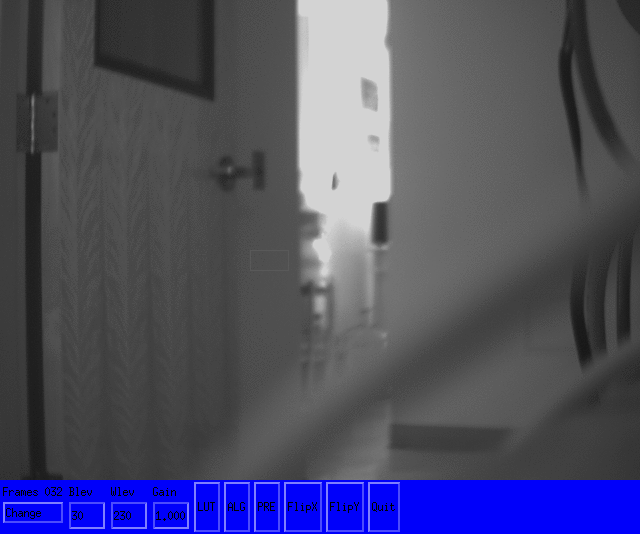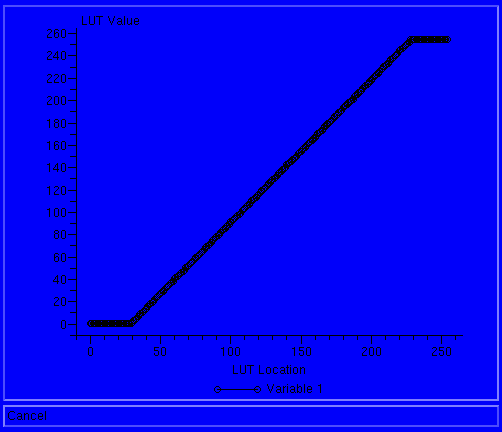
Updated by TG 04/13/07
For directions to start/stop guiding, visit the TCS60 link
This computer is normally left on at all times. It does not need to be shut off during a lightning storm. Coverage of this PC will begin with a discussion of how to log in, what to startup, and how to shut it down (just in case!).
If you need to log in, you will see the KDE Login Window centered in the screen. The account name is guider, the passwd is as for the observer account on flwo60, and is posted in the control room. Type guider in the Login: line, and enter the passwd on the Password: line. You can hit enter here, or select Go! to login. This will start up the KDE window manager. It has a Control Panel to the right of the screen. You can hide or show the Control Panel by clicking on the Up or Down arrow at the bottom of the Control Panel. In the center of the screen is an Icon named "Start Guider". Click this once to start the Video Processor, and Guider applications.
To Logout, make sure the Realtime system is shut down! Then click the "Quit" button on the vidDisp window. This will kill all three sections of the software. Next, move the mouse outside of any window, right click, and a menu will appear. Select the last entry, Logout. It asks if you wish to restore, which is fine to do.
To shutdown the machine, first shutoff software and logout. From the KDE Login Window, select the "Shutdown Button". You have a choice of "Shutdown", which will require you to push the power switch to start again, or Reboot, which will restart the computer without a power cycle.
When you click the "Start Guider" button, three programs start. You will only see two. The first is called vidDisp, and is the display process for the Video Processing part of the software. It presents the only controls you will normally need on this computer. The other two programs are tacquire, which performs the actual Video processing and interfaces with the frame grabber device driver, and rguide, which controls the rotator interface, and the actual guiding functions and hand paddle interface. Neither of these programs has a user interface. More on each program follows.
These two programs work together. All you see is vidDisp. It has controls that influence tacquire. Tacquire also shares the video image with rguide.
This program provides real time frame rate video processing of the camera signal from the guide cameras for FAST and the ECHELLE. It provides an interface with a lower level device driver that reads from a DT3155 PCI framegrabber. This program has no direct user interface. It get commands thru shared memory from the vidDisp and rguide programs,
VidDisp is a display program and user interface for the video processing that is used to replace our old LHK processor. It presents a window as shown here. This picture was produced from my desk, not using a 1.5M Camera!

The large top section of this program displays the current processed image. The light gray box is an indicator of where the slit occurs. You can move this box by right clicking the mouse in the image window. This will center the box where you clicked.
At the bottom are a series of controls. These controls are the only user interface for vidDisp and tacquire. From the left there is a widget to click to change the number of frames summed. These frames are presented by this system at the rate of 30 frames per second. Clicking the change widget gives a list of possible summing numbers. Down Arrow here will decrease this value. The possible values are 1,2,4,8,16, 32,64, and 128 ONLY. Click the one you want. Summing 32 frames can take more than 1 second to average the frames. At 132 it takes 4.4 seconds. This function is useful to reduce image noise, where SNR will rise as more frames are summed.
Next there are a series of Input boxes. You can place the cursor in these boxes, replace the values with a new value, and hit return. The new value will be applied. The first one is Blev. This parameter represents the black threshold for most of the image algorithms. It should be set to a value just below the background value. It has a default value of 30, which works well for FAST. Next is Wlev, which will clip the maximum white level. Values above this value are clamped to this value in some algorithms.
The next one is Gain. Gain currently is only used in the Contrast-Stretch and Linear Gain algorithms, mentioned later. When using other algorithms it is effectively 1. For the stretch algorithm this is a multiplicative gain of the input signal. If the gain is set to 1.5 and the input pixel value is 20, a value of 30 for this pixel will be produced. Values less than 1.0 will decrease the input value.
Blev and Wlev can also be adjusted be clicking with the middle mouse button and holding, moving and then releasing the button. Movements left-right will adjust Wlev, and movements down-up will adjust Blev.
Next is LUT, which will show the current Lookup Table when clicked. Hit the Cancel button to make this display disappear.

Moving along we come to the ALG button, which allows selection from one of four processing algorithms. Select from:
Linear Gain, which multiplies the input value by the gain setting.
Contrast Stretch, which clips the input values between Bval and Wval, then multiplies the value by gain.
Parabola, which multiplies input value by a parabolic function. (see LUT)
Square Root, for input value t1, new value = sqrt((ti - bval) / (wval - bval)) clipped between Blev and Wlev.
Log, producing a logarithmic function clipped between Blev and Wlev.
Next is the PRE button, which allows the user to select from four setups, which will set all values to suggested values from P. Berlind for four cases, namely Echelle Dark, Echelle Light, Fast Dark and Fast Light. It is expected the new users will most often use the PRE button to fit the current telescope conditions.
The last two buttons will flip the image in the left/right and top/bottom directions. And finally there is the Quit button, which will end all three programs, and should only be clicked when the Realtime System is not running.
This program is the autoguider. It is running inside an xterm window, and you should NOT exit this program! It has no interface from this computer, and is only displayed for informational purposes.. The tacquire program presents it images, and the TCS60 Program contains all controls for this program.